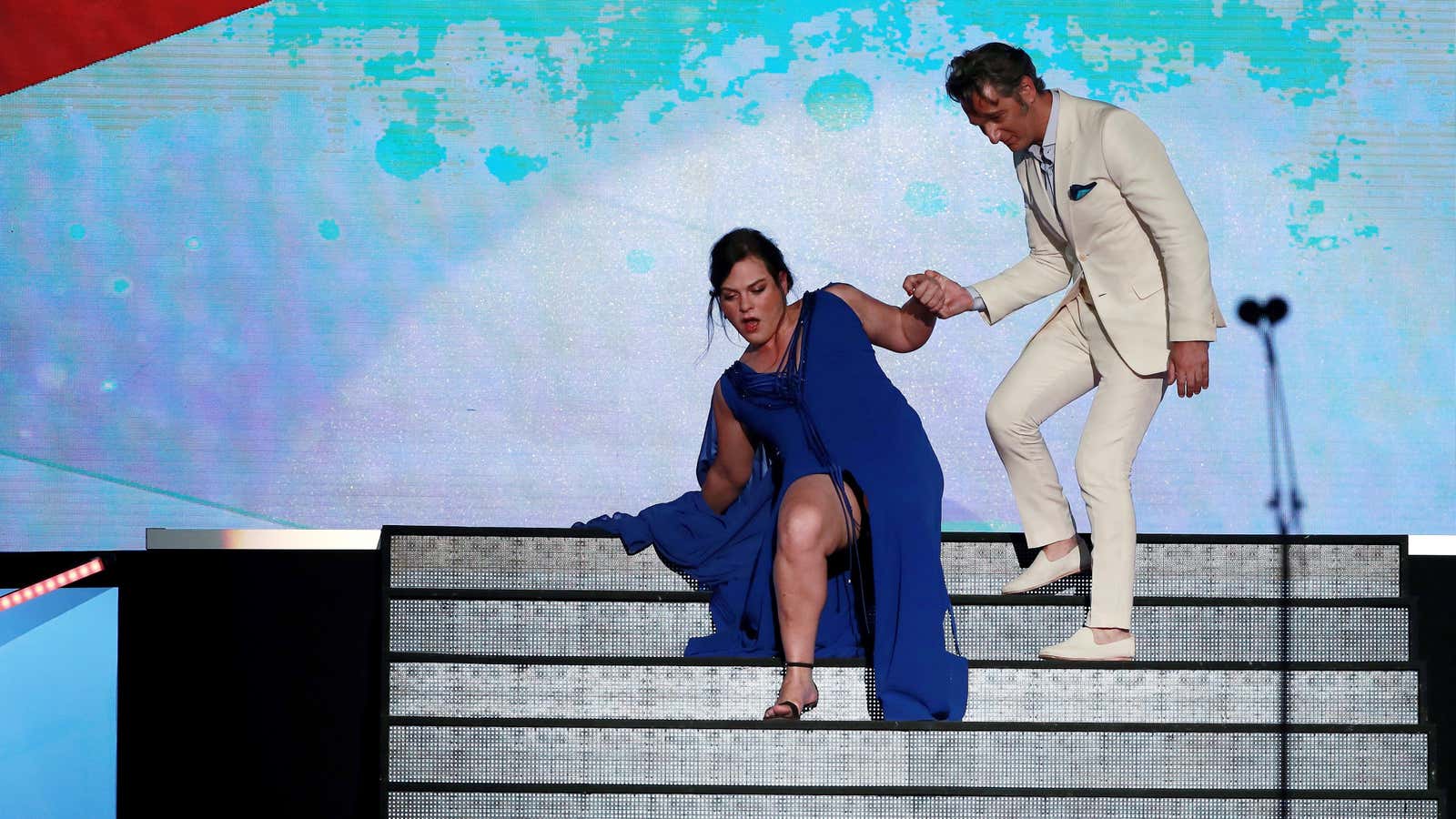A confident stomp and wide, carefree stride are now totally in vogue. Orthopedic sandals, chunky sneakers, fanny packs, and big, ripped jeans are dominating the fashion scene, and all the coolest cats look like kibbutzniks, circa 1978.
Officially, this easy, gender-neutral style that feigns indifference to attractiveness is known as “ugly fashion.” But beauty isn’t a fixed notion, so what was once called odd is now all the rage—and if we’re lucky, the look is here to stay.
Aghast industry insiders, who are still attached to classics like high heels and short dresses, deem this comfortable clothing atrocious. However, the business of la mode is still dominated by men who’ve never perched atop stilettos, pulled down a miniskirt, been stuck with a clutch, or walked fast past a posse of catcallers. So what do they know?
Unofficially, the trend is a win for feminism and egalitarianism, a signal that confidence, good sense, and freedom are hot, whereas vanity, coquettishness, and discomfort are not. The popularity of “ugly” clothing should come as a great relief to all. It’s proof that clothes don’t make the man or woman, and that sitting easily in one’s skin—and gear—is the best look. Be glad practicality is back—even if it can cost a pretty penny, like Balenciaga’s $895 moonbootish sneakers, and the $400 furry Birkenstock collaboration with Rick Owens.
Sure, there are those who love the power of a high heel and rightly argue that women should be free to flaunt their femininity and wear anything without harassment or condemnation—as they should. Still, there’s no denying that notions of femininity are often dictated by men. The 20th-century stiletto is a product of male fantasies, for example, designed to arouse rather than get around.
Heels have a long history, not all sexy—they were once a kind of practical fashion themselves. Murals from ancient Egypt, dating back to 3500 BC, show heels worn in religious ceremonies. In 200 BC in ancient Greece, actors perched onstage aloft 4-inches of cork, called kothorni.The Japanese wore platforms known as geta, made of a wooden plank balanced on two 7-inch blocks, meant to keep feet clean on the streets. The Persian cavalry in the 10th century wore heels to stand in their stirrups, and in 1500, the Persian monarch Shah Abbas visited Europe, influencing royal fashions.
Aristocrats, men and women alike, adopted the monarch’s high heels. The 17th-century French king Louis XIV, who stood a mere 5-feet-4-inches, liked the added height and had a signature look—that lacquered red sole later trademarked by Christian Louboutin. Meanwhile, in the colonies, in 1670, New Jersey Puritans outlawed high heels as deceptive—wooing a man with false height subject a woman to accusations of witchcraft.
Men abandoned the high heel altogether in the mid-1700s. Elizabeth Semmelhack of the Bata Shoe Museum in Toronto tells the BBC, “There begins a discussion about how men, regardless of station, of birth, if educated could become citizens. Women, in contrast, were seen as emotional, sentimental and un-educatable. Female desirability begins to be constructed in terms of irrational fashion and the high heel—once separated from its original function of horseback riding—becomes a primary example of impractical dress.”
But in 1789, during the French Revolution, heels fell out of vogue altogether, along with the whole idea of royalty. No one wanted to seem too haughty, literally or figuratively. Impracticality was, briefly, a relic of the aristocracy.
Then erotic photography revived the high heel in the 19th century. In short order, a look that had been reserved for pin-ups enters high fashion. After World War II, the stiletto takes to the runway. Soldiers had spent much time gazing at posters of pin-ups wearing little while perched atop heels, and their fantasies became fashion’s reality.
Since, many women have developed something of a heel fetish. Carrie Bradshaw, a character on Sex in the City, was obsessed with them. As sex anthropologist Helen Fisher told Today in 2009, “High heels thrust out the buttocks and arch the back into a natural mammalian courting—actually, copulatory—pose called ‘lordosis.'”
But many women would prefer to get places, whether the top of our profession or the subway station, without looking like innuendo in motion. This is borne out by the rise in women’s sneaker sales, which surged 37% from the previous year in the US in 2017 while sales of high heels declined 11 percent, according to the NPD Group’s Retail Tracking Service.
So for many women, the “ugly” trend is actually practical and very cool. We’re happy to stomp confidently in awkward clothing, knowing nothing is sexier than independence.
